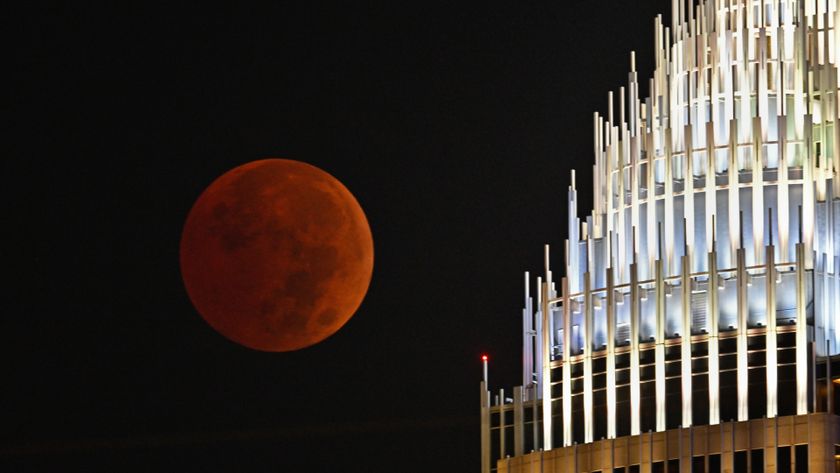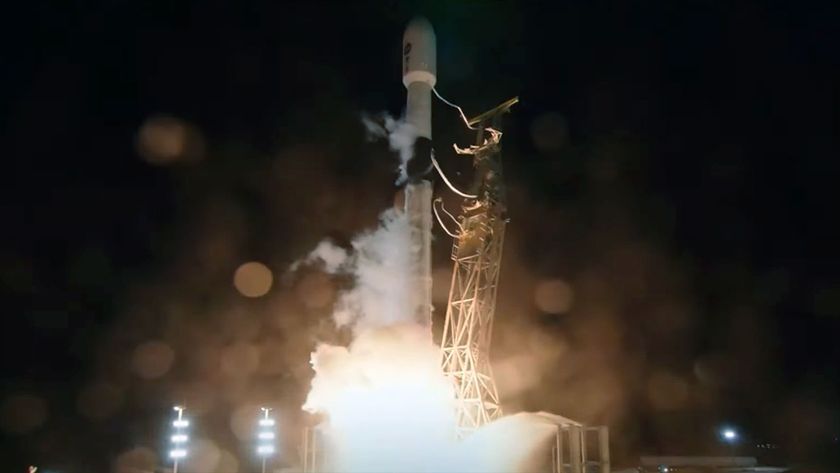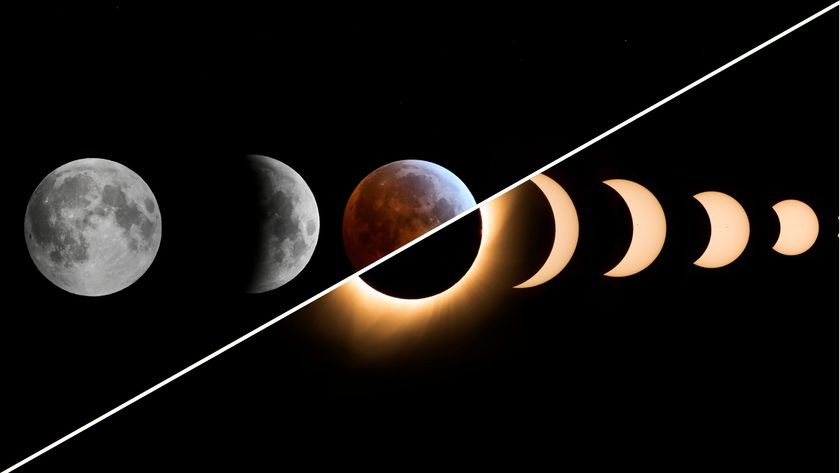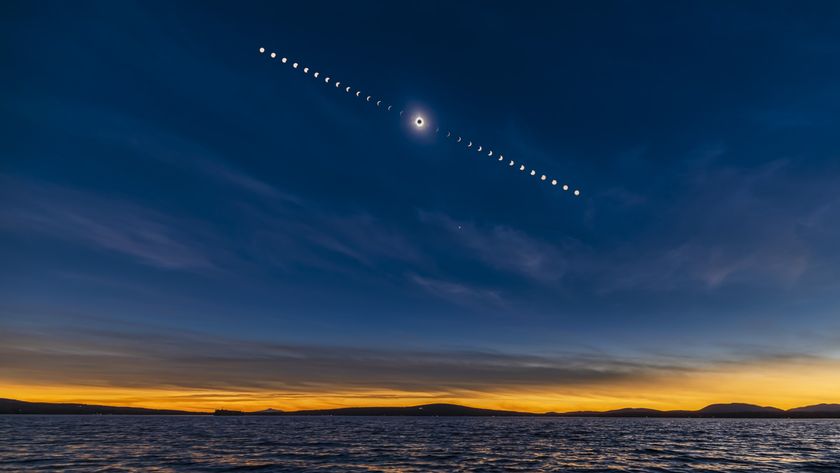Deneb: Tail of the Swan
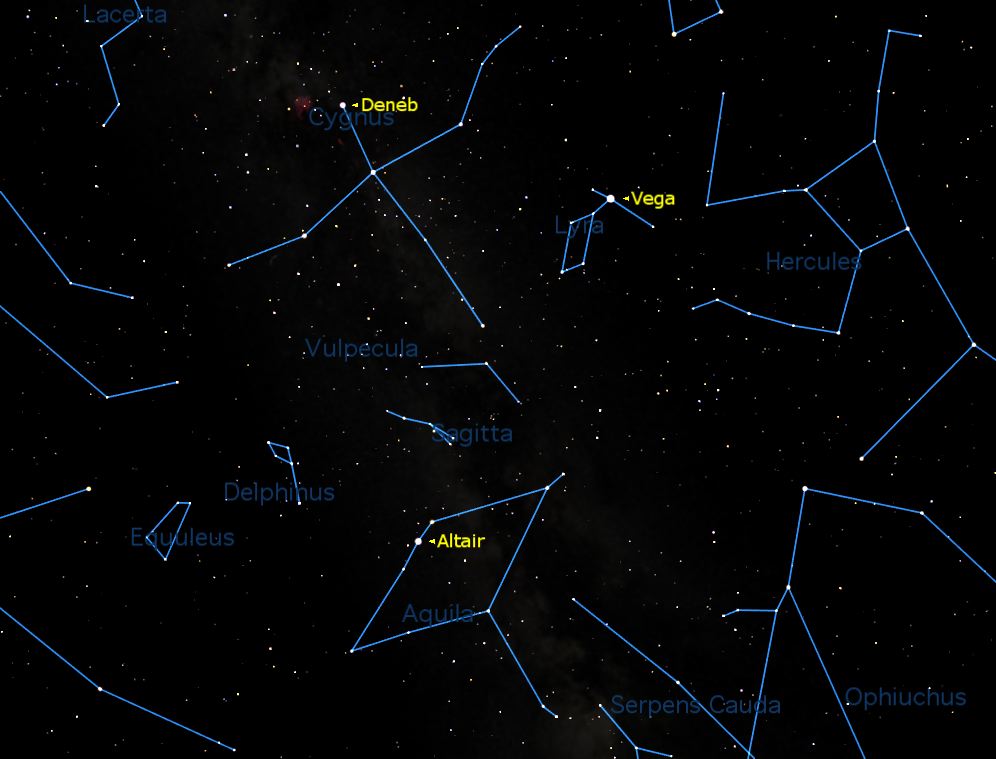
Deneb is the most distant bright star in Earth's sky, lying thousands of light-years away from Earth. (Its exact distance is uncertain.) The star is in the "tail" of the constellation Cygnus (the Swan), and from Earth's perspective is in the same area of sky as gas clouds that fill the constellation's area.
Deneb is also one of the three stars considered part of the "Summer Triangle," which also includes Altair and Vega.
Described in at least one scientific paper as the "brightest and best-studied A type supergiant," this main sequence star is losing mass at a terrific rate every year. Deneb, some sources say, will eventually evolve into a red giant, and then end its life with a supernova explosion. [The Brightest Stars in the Sky: A Starry Countdown]
Among its many science fiction references, Deneb was mentioned in several episodes of the original series of "Star Trek" — perhaps most notably, when a Klingon called Captain James T. Kirk a "Denebian slime devil." The star also features in the Isaac Asimov 1950s-era story, "The Feeling of Power."
Deneb before modern astronomy
Deneb's name comes from an Arabic word meaning "tail". It was originally part of the Arabic phrase "Al Dhanab al Dajājah," meaning "the hen's tail," according to "Star Names: Their Lore and Meaning," by Richard Hinckley Allen.
The name "Deneb" has been used for other stars in the past, all "tails" of their respective constellations. Examples include Deneb Algedi (now best known as Delta Capricorni, in Capricorn), Deneb Kaitos (Beta Ceti, in Cetus) and Denebola (which is in the constellation Leo).
Several sources cite Deneb as the marker of a bridge in the Chinese Qixi legend. The story says that every July 7, the cowherd Altair and weaving girl Vega get to enjoy a night together after crossing the bridge, the Milky Way.
German astronomer Johann Bayer referred to the star as "Galina" in his oft-cited seventeenth-century star atlas, Uranometria, Allen said.
Locating Deneb
One of the difficulties of observing Deneb is the uncertainty about its distance. Because astronomers aren't quite sure how far away it is, that makes it hard to make definitive judgments about its brightness and other features. Deneb's location is:
- Right ascension: 20 hours 41 minutes 25.9 seconds
- Declination: +45 degrees 16 minutes 49 seconds
Estimates for its distance range anywhere from between 2,100 to 7,400 light-years, according to astronomer David Darling, although the figure 3,200 light-years is often quoted. The variation comes due to uncertainties in parallax, a method used to measure close star distance by examining the apparent shift among background stars.
Astronomers classify Deneb as a blue supergiant, a class of star that is hundreds of times larger than the sun. Energy bursts known as gamma rays may originate in part from the death throes of this class of star, according to research published in 2013.
Deneb is extremely active. A 1982 paper showed that it is losing a lot of mass every year — about a millionth of a solar mass annually. That's 40 million times the rate of the sun's loss, according to astronomer Jim Kaler.
There is an entire class of stars named after Deneb's scientific name (Alpha Cygni variables) that experience what are called "non-radial pulsations," meaning that different parts of the star expand and contract at the same time.
Deneb in the future, and in science fiction
Astronomers aren't sure how Deneb will end its life — quietly, or with a big bang.
"It might be expanding and cooling with a dead helium core, and on its way to becoming a red supergiant, or it might have advanced to the state of core helium fusion," Kaler said, but said most astronomers believe "its fate is almost certainly to explode sometime astronomically soon as a grand supernova."
That's not likely to happen for a few million years, however. In the meantime, Deneb is among the small group of stars that occupy the "north star" position in the Northern Hemisphere as the Earth's axis wobbles and points in different directions. It will be the North Star (approximately) in the year 9,800, just as it was 18,000 years ago.
No planets have been found circling the star to date, at least in the real world. The "Star Trek" universe mentions (or visits) several planets circling the star. The pilot episode for "Star Trek: The Next Generation," "Encounter at Farpoint", for example, took place on Deneb IV. That planet was also mentioned in an early episode of the show's original series, "Where No Man Has Gone Before."
Other mentions of Deneb in science fiction:
- At least two Isaac Asimov stories: "The Machine That Won the War" and "The Feeling of Power"
- "Babylon 5," where the planet Deneb IV is noted as "the location of an Earth Alliance colony ... with the largest colony market in the area," according to online fan site The Babylon Project.
- "Uncommon Sense," a 1945 short story by writer Hal Clement.
Join our Space Forums to keep talking space on the latest missions, night sky and more! And if you have a news tip, correction or comment, let us know at: community@space.com.
Get the Space.com Newsletter
Breaking space news, the latest updates on rocket launches, skywatching events and more!

Elizabeth Howell (she/her), Ph.D., was a staff writer in the spaceflight channel between 2022 and 2024 specializing in Canadian space news. She was contributing writer for Space.com for 10 years from 2012 to 2024. Elizabeth's reporting includes multiple exclusives with the White House, leading world coverage about a lost-and-found space tomato on the International Space Station, witnessing five human spaceflight launches on two continents, flying parabolic, working inside a spacesuit, and participating in a simulated Mars mission. Her latest book, "Why Am I Taller?" (ECW Press, 2022) is co-written with astronaut Dave Williams.

